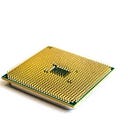Test & Burn-in Sockets: An Overview
What is Test & Burn-in Socket?
Test & Burn-in sockets are used for testing the various semiconductor products. Test & burn-in (TBI) sockets represent a small but technically challenging segment of the connector industry. Test Socket Manufacturers mainly focuses on the design of the products and how it can be improved so that they can clear the testing parameters. Burn-in is a testing process designed to detect early failures in components and reduce the potential for defects and failures in the field. During burn-in, the component endures extreme operating conditions, including temperature extremes, high use cycles, and high voltages. The main objective behind using the burn-in process is to eliminate defective components which can cause the system failure. Those components which have shorter lifespan are also eliminated with the help of burn-in process. A particular component can fail at many stages such as manufacturing stage, operational stage or due to wear down. Thus, the role of Effective testing processes is necessary.
Importance of Testing & Burn-in Process:
Testing and Burn-in process holds a significant position in the electronic industry. As mentioned above, it is used to detect failures in laboratory conditions. These tests are conducted at extreme temperature, to determine whether the particular component will survive the real life scenarios. Burn-in process reduces the failure turnover of components, increases efficiency, and reduces the cost of production if proper actions are taken timely.
Test & Burn-in Socket Suppliers:
The market of test socket manufacturers holds a very significant position for many industries. Yamaichi Electronics, Cohu, Enplas, ISC, and LEENO are the top five suppliers of test sockets. Collectively they hold 42% of the test socket market. Among them, Yamaichi Electronics of Japan is the industry leader, while Cohu from the United States is a close second. Enplas belong to Japan, while ISC & LEENO are both from South Korea. The roll out of 5G has enabled a upwards trend in the test socket industry as the demand for testing sockets has comparatively increased.
Summary:
Whether it’s your new iPhone or new computer, every electronic product goes through this process so that good products can be separated from the defective ones easily. It is easy to halt production if these processes are carried out in early stages of production. Contrary to this if the defects and failures are detected one the product is rolled out in the market, it will create a chaotic situation for the company and they will suffer huge financial losses. If testing is the way of ensuring the efficiency and performance of a component or a product, a burn-in process is a way to ensure its reliability. Testing and Burn-in processes are not mutually exclusive and most of the time they are used simultaneously.
